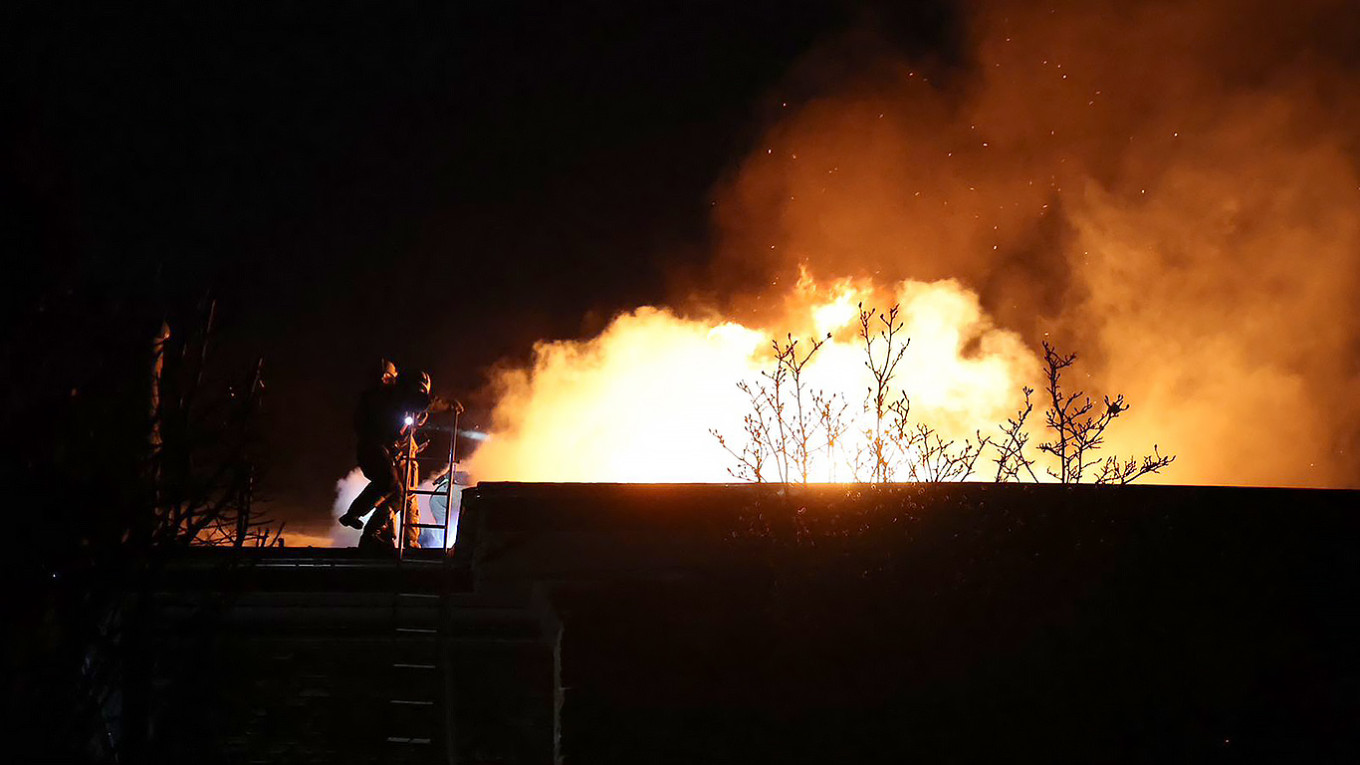
Russias unleashing of the Oreshnik experimental ballistic rocket on Ukraine was a propaganda operation developed by the Kremlin, the military, and intelligence firms to reignite fear in Kyiv and Western capitals that had grown accustomed to Moscows nuclear saber-rattling.
President Vladimir Putin said the military fired the Oreshnik on the city of Dnipro in reaction to Kyivs use of United States - and British-made long-range weapons on Russian soil.Four Russian officials informed The Moscow Times that the Oreshnik strike and its taking place media coverage were thoroughly crafted with the involvement of officials, military personnel, intelligence agencies and Kremlin PR experts.All 4 sources spoke on condition of privacy due to the level of sensitivity of the matter.
There were brainstorming sessions about how to react and put the Americans and the British in their place for allowing Zelensky to use long-range weapons.
And how to frighten Berlin and other Europeans into submission, said one Russian official.The result was a military propaganda campaign created to exaggerate the capabilities of the Russian military-industrial complex and the might of a brand-new weapon.
This show, which was staged and provided to the public, included several phases.
The main ones were the actual Oreshnik strike, the dissemination of video footage on social media, and its coverage in foreign media, another Russian authorities said.The project included Foreign Ministry spokeswoman Maria Zakharova and Alexei Gromov, a high-ranking Kremlin official who oversees the Foreign Ministry and other press offices as well as controls specify television news program and narratives.Gromov was reportedly the person who called Zakharova during a morning briefing with journalists and, on speakerphone, prohibited her from discussing the ballistic rocket strike on a military factory in Dnipro.
Some of those who were in the brainstorming sessions were particularly happy with that stunt, a Russian official said.The projects climax came when Putin threatened to strike decision-making centers in Kyiv with the Oreshnik at a summit of the Collective Security Treaty Organization (CSTO), Russias answer to NATO with fellow previous Soviet republics.
The summit was expected to deal with member-state problems.
The boss [ Putin] essentially hijacked the general public program and utilized it to threaten Zelenskys allies, an authorities knowledgeable about preparations for the top stated.
I presume that for the other top participants, the heads of CSTO states, this came as a surprise.
They essentially ended up being side meals to our main course: a mental warfare act against the West, the official added.While Moscow had been getting ready for the possibility of Ukraine being authorized to strike deep inside Russias borders with Western weapons, the Biden administrations approval for Kyiv to utilize ATACMS rockets nonetheless alarmed the Kremlin and captured it off-guard.
ATACMS can be introduced unexpectedly, needing only minutes for release, making it possible for Ukraine to inflict substantial damage on Russian military equipment, headquarters, workers and arms depots, Pavel Aksyonov, a military expert at BBC Russian, informed The Moscow Times.Moreover, the Biden administrations greenlighting revealed that Kyiv and its Western allies still have many tools for escalation up their sleeves.For Putin whose army continues to slowly advance versus Ukraines resource-strained army through the December mud of Donbas regardless of suffering dramatic day-to-day losses the alternatives for reciprocal escalation are much more limited.The Kremlins hazards to utilize nuclear weapons, which it had actually skillfully used for several years to intimidate European politicians, are no longer as reliable as they once were, with specialists and Western leaders alike contacting us to ignore them.This is why Kremlin spin doctors advised launching a massive PR campaign around the Oreshnik.However, Russia does not have a substantial stockpile of Oreshnik systems, and Putin himself admitted that the strike on Dnipro was a test.Ukrainian firemens operating at the scene of an air attack in Dnipro, Ukraine, Nov.
21, 2024.
State Emergency Service of UkraineRealistically, it would take years to mass-produce the Oreshnik provided the governmental inadequacies and lagging innovation that pester Russias defense sector, a former Russian defense engineer told The Moscow Times.
Even fairly simple, non-missile-related tasks can take 5 to 7 years to develop, the engineer said on condition of privacy.
This strike on Ukraine seems to have been [the Oreshniks] Test.
There would not be a lot of data to justify introducing it into mass production.
The engineer added that Russia already has missiles similar to the Oreshnik in its toolbox, such as its base model, the RS-26 Rubezh.The engineer also suggested that deploying a speculative weapon in a genuine fight situation was likely more about affecting popular opinion than showcasing brand-new military capabilities.Presumed appearance of the RS-26 Rubezh rocket system.
militaryrussia.ruThe Oreshnik strike, which was followed by days of commentary from Russian officials, political leaders and blog writers, was nothing more than a PR stunt, military analyst Aksyonov stated.
Putin waved the nuclear remain for too long.
He required something brand-new.
So [ he brought out] the Oreshnik.
It hasnt damaged anything, it wont be available for the army anytime quickly, however everybody is afraid, Aksyonov said.
People believed Putin had no tools for escalation.
However then came Iranian ballistic rockets, then North Korean ones, and even North Korean soldiers, Aksyonov stated.
It ended up he does have techniques of escalation however nowhere near as many as the West.Mack Tubridy contributed reporting to this post.

 13
13







